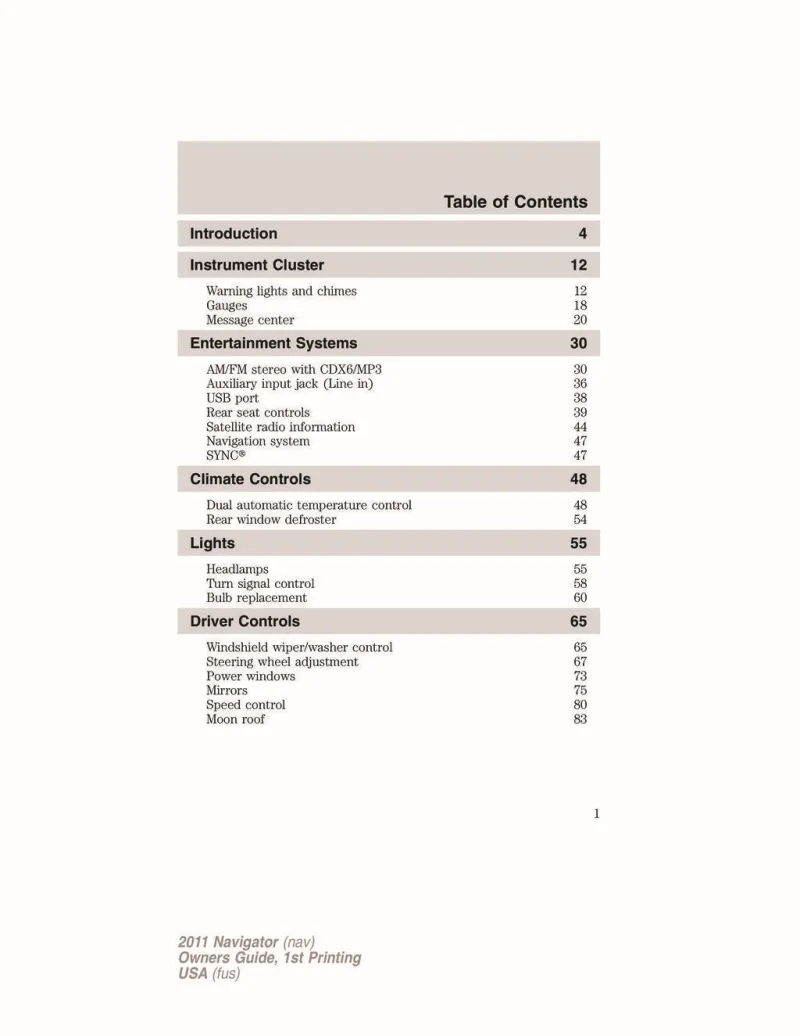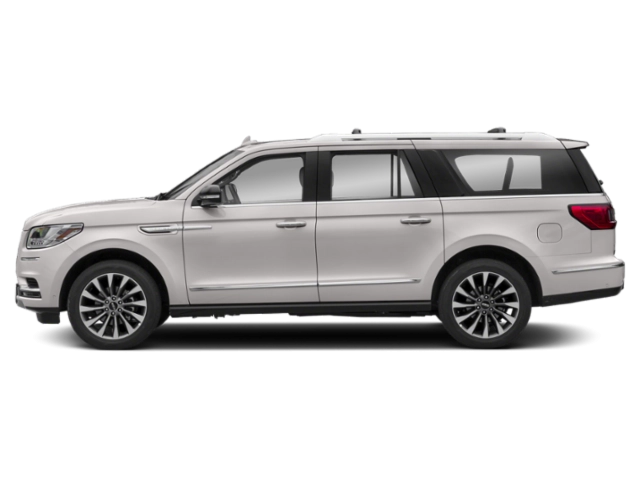2011 Lincoln Navigator Owner's Manual

Table of Contents
2011 Lincoln Navigator Overview
Introduction
The 2011 Lincoln Navigator embodies luxury and sophistication, offering a powerful performance coupled with spacious interiors and advanced technological features. As a flagship SUV, it maintains Lincoln's commitment to premium quality, with an unmistakable road presence that commands attention. Whether navigating city streets or tackling off-road adventures, the Navigator seamlessly blends comfort and capability.
Powertrains
Under the hood, the 2011 Navigator is powered by a robust 5.4-liter V8 engine that effortlessly delivers 310 horsepower and 365 lb-ft of torque. This engine is paired with a six-speed automatic transmission, providing smooth gear transitions and improved fuel efficiency. With an available all-wheel-drive system, drivers can traverse various terrains with confidence, enhancing both on-road handling and off-road prowess.
Trims
The 2011 Navigator is available in two trim levels: the base Navigator and the high-end Navigator L. Both trims offer distinct features and luxury treatments, with the Navigator L providing extra cargo space for larger loads. Standard features across both trims include leather seating, tri-zone climate control, and a premium audio system, ensuring that all passengers experience the epitome of comfort and style.
Features
Luxury abounds in the 2011 Lincoln Navigator, with features designed to enhance the driving experience. Key highlights include a rear-view camera, navigation system, and an available rear-seat entertainment system to keep passengers entertained on long journeys. Additionally, safety features such as stability control, anti-lock brakes, and multiple airbags contribute to peace of mind while on the road.
Owner's Manual
The owner's manual for the 2011 Lincoln Navigator serves as an essential guide, providing valuable information on vehicle operation, maintenance schedules, and troubleshooting tips. It ensures that owners can fully utilize the Navigator's many features while promoting longevity and performance. The comprehensive manual reflects Lincoln's dedication to quality and customer satisfaction.
User manual download
The Lincoln Navigator owner manual for the 2011 model year is to be found in PDF downloadable format on this page. The owner manual for the model year 2011 is free and in English, but the repair manuals are usually not easy to get and may cost more.
Manual Questions
Fill the form below and someone will help you!

